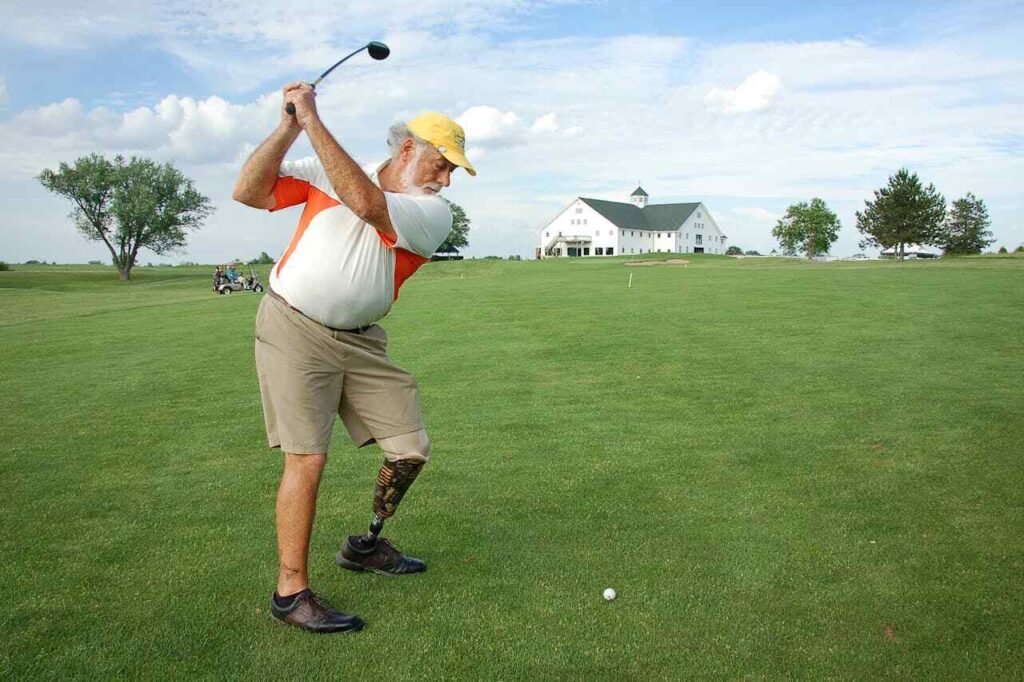Every day is made up of small moments—waking up, moving, resting, and winding down. For seniors using prosthetic limbs, each of these moments can feel different. What once seemed simple—standing up, walking to the kitchen, or stretching before bed—now takes more thought and care.
But with the right routine, those moments can feel easy again. A low-effort daily routine doesn’t mean doing less—it means moving smarter, caring gently for your prosthesis, and giving your body what it needs to stay balanced and strong.
At RoboBionics, we’ve helped seniors across India build simple habits that make every day smoother. Our goal is to make living with a prosthesis feel natural—from the moment you open your eyes to the moment you rest at night.
This guide walks you through a calm, easy routine for the whole day. You’ll learn gentle ways to start your morning, safe tips to move through your afternoon, and soothing habits to relax at night—all tailored for senior prosthetic users.
Starting Your Morning Right
Gentle Wake-Up Movements
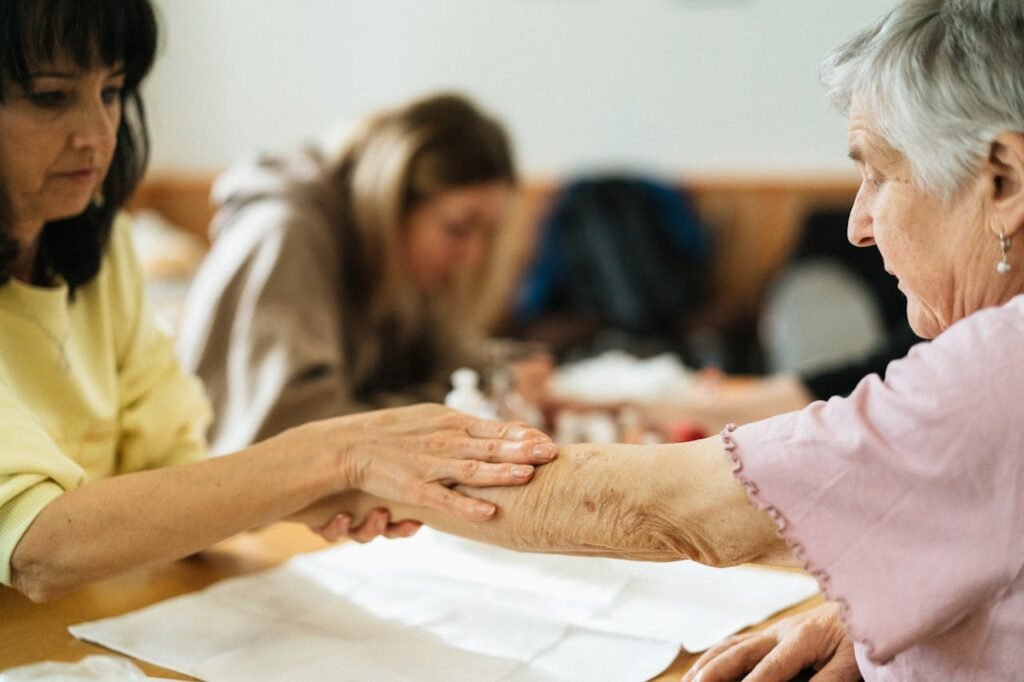
Morning is when your body feels stiffest, especially if you’ve spent the night lying still. Before even getting out of bed, begin with a few slow stretches to wake up your muscles.
Wiggle your toes, roll your ankles, and gently bend your knees if possible. Stretch your arms overhead and take a deep breath. These light movements get your blood flowing and prepare your joints for the day.
If you use a lower-limb prosthesis, move your residual limb gently to prevent tightness. A few small circles or stretches will make it easier to put on your prosthesis later.
Checking Your Residual Limb
Before wearing your prosthesis, always inspect your skin. Look for redness, irritation, or swelling. The skin should feel dry and comfortable, not damp or sore.
If you notice any pressure spots or blisters, give that area a rest and consult your prosthetist. Catching small issues early prevents discomfort later in the day.
Wipe your residual limb with a clean, damp cloth and pat it dry. This small act of care protects both your skin and your prosthetic liner.
Morning Hygiene and Skin Care
Good hygiene is part of every comfortable day. Wash your residual limb with mild soap and warm water. Avoid harsh cleansers—they can dry your skin and cause itching.
Once dry, apply a light, non-greasy moisturizer if your prosthetist recommends it. Allow it to absorb fully before putting on your prosthesis.
Clean, healthy skin ensures a better fit and reduces friction. It also keeps your prosthesis feeling comfortable throughout the day.
Putting on Your Prosthesis with Ease
Take your time when putting on your prosthesis. Sit comfortably, keep your back straight, and position the socket gently over your limb. Make sure it’s seated properly before standing up.
If you use liners or sleeves, check that they’re aligned correctly—no wrinkles or folds. Even small creases can cause pressure or rubbing during the day.
Once fitted, stand slowly. Feel your balance and take a few gentle steps in place. Adjust until your prosthesis feels secure and natural.
Morning Breathing for Calm Energy
Before starting your day, take a few moments to breathe deeply. Inhale slowly through your nose and exhale gently through your mouth.
Deep breathing wakes your body and calms your mind. It also helps you tune in to how your prosthesis feels that day—balanced, comfortable, and ready for movement.
A calm, focused start sets the tone for the rest of your day.
Moving Through the Late Morning
Light Mobility Practice
After breakfast, spend a few minutes on simple mobility drills. These don’t have to feel like exercise—they’re just movements that keep your body flexible.
Stand tall and shift your weight from one leg to the other, slowly and evenly. This helps your hips stay loose and teaches your body to balance naturally on both sides.
If you feel steady, take a short walk indoors or in your garden. Walking early in the day keeps your prosthesis and muscles working smoothly.
Managing Energy and Rest
Fatigue is common among prosthetic users, especially in the morning when your body is adjusting. Balance movement with rest.
After walking or stretching, sit down for a few minutes with good posture. Resting properly—upright, not slouched—lets your muscles recover without stiffness.
Avoid sitting too long in one position. Even short breaks to stand or shift weight keep your blood circulating and prevent fatigue.
Checking Prosthetic Fit Mid-Morning
Temperature, swelling, or activity can change how your prosthesis fits as the day goes on. Mid-morning is a good time to check for comfort.
If you feel pressure, pinching, or looseness, adjust your socks, liners, or straps. Never ignore small discomforts—they often grow worse later.
Your comfort determines how freely you move, so take the time to make small adjustments when needed.
Mindful Movements for Balance
Mindful movement is about noticing how your body feels while it moves. As you walk, focus on your steps—heel first, then toe.
Keep your head up and shoulders relaxed. Imagine your spine as a tall line supporting your body.
Walking slowly with awareness strengthens coordination and confidence, especially for seniors using prosthetic legs or feet.
Afternoon Ease and Support
Post-Lunch Body Awareness
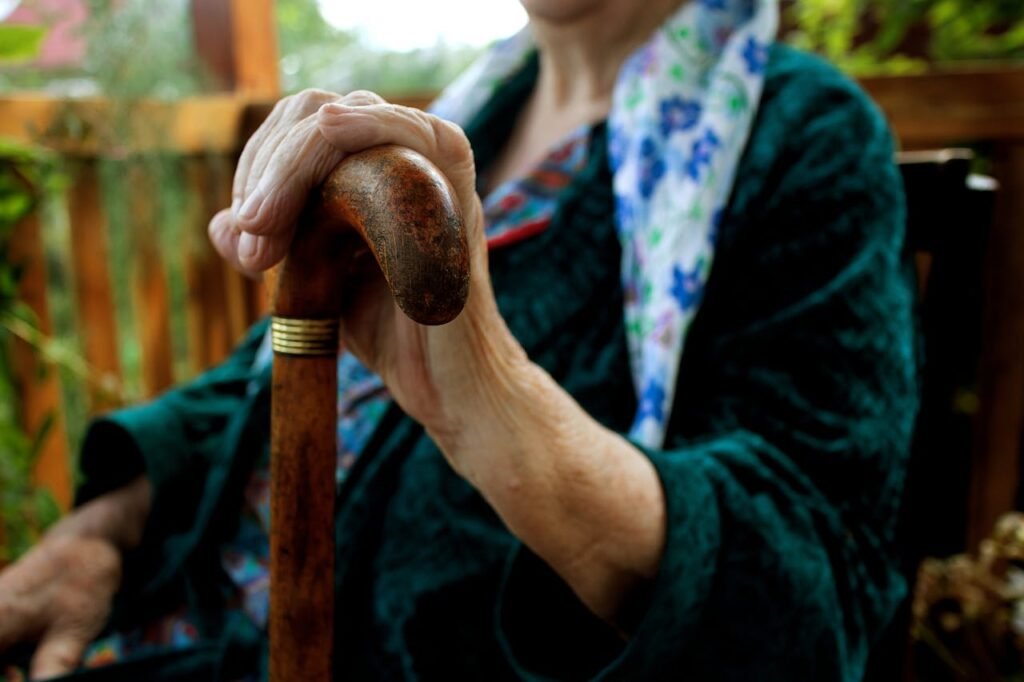
After lunch, digestion and relaxation slow your body slightly. It’s a perfect time for quiet awareness exercises.
Sit comfortably, close your eyes, and take slow breaths. Notice how your prosthesis feels—tight, loose, or balanced.
Make small adjustments if needed. Even a few mindful minutes help prevent tension and promote comfort for the rest of the afternoon.
Light Afternoon Stretches
As the day continues, stiffness can return, especially if you’ve been sitting. A few gentle stretches can bring back mobility.
While standing or seated, roll your shoulders back, twist your torso slowly side to side, and move your neck in slow circles.
Stretch your legs by extending one forward at a time and pointing your toes. These motions refresh your muscles and reduce strain on your joints.
Managing Sweat and Skin Comfort
Afternoon heat or humidity can cause moisture buildup around your prosthetic socket. If you feel dampness, remove your prosthesis briefly and clean the liner with a soft cloth.
Dry your residual limb completely before refitting. Keeping the area clean and dry prevents irritation and odor.
If sweating becomes frequent, talk to your prosthetist about breathable liners or light powders to help control moisture safely.
Midday Rest Without Stiffness
Taking a nap or short rest after lunch can be refreshing, but it’s important to rest smartly.
If you lie down, keep your limb supported with a small pillow to prevent swelling. Avoid keeping your prosthesis on for long naps—it’s better to let your skin breathe.
When you wake up, stretch gently before standing. This helps your body adjust smoothly from rest to movement.
Evening Balance and Gentle Strength
Afternoon to Evening Transition
As the day slows down, your body also begins to relax. This is the best time to do gentle strengthening movements that help your prosthesis feel lighter and more stable.
Exercises in the evening don’t need to be intense. They simply keep your muscles active and flexible so that walking remains easy and comfortable.
This time also helps your mind wind down from the day’s activities while keeping your body supported and aligned.
Gentle Standing Routine
Stand near a wall or counter for safety. Slowly rise on your toes and lower yourself back down. Do this a few times to engage your calves and ankles.
Then, shift your weight gently from side to side to strengthen your hips and core muscles. These movements help maintain balance and posture while using your prosthesis.
Even five minutes of gentle activity makes a noticeable difference in stability and endurance.
Evening Walks for Relaxation
A short walk in the evening improves circulation and relaxes tight muscles. Choose a quiet, well-lit space where you feel safe.
Walk at a slow, steady pace, focusing on smooth, balanced steps. Let your arms swing naturally and breathe deeply.
Walking helps you process the day and prepares your body for a calm night’s rest.
Reflecting on Comfort and Posture
After your walk, take a moment to assess your comfort. How did your prosthesis feel today? Were there moments of tightness or fatigue?
Use these reflections to make small adjustments for tomorrow—perhaps more padding, a shorter walk, or an earlier rest.
Awareness of your comfort patterns helps you prevent issues and enjoy your daily routine with ease.
Nighttime Prosthetic Care
Removing Your Prosthesis with Care
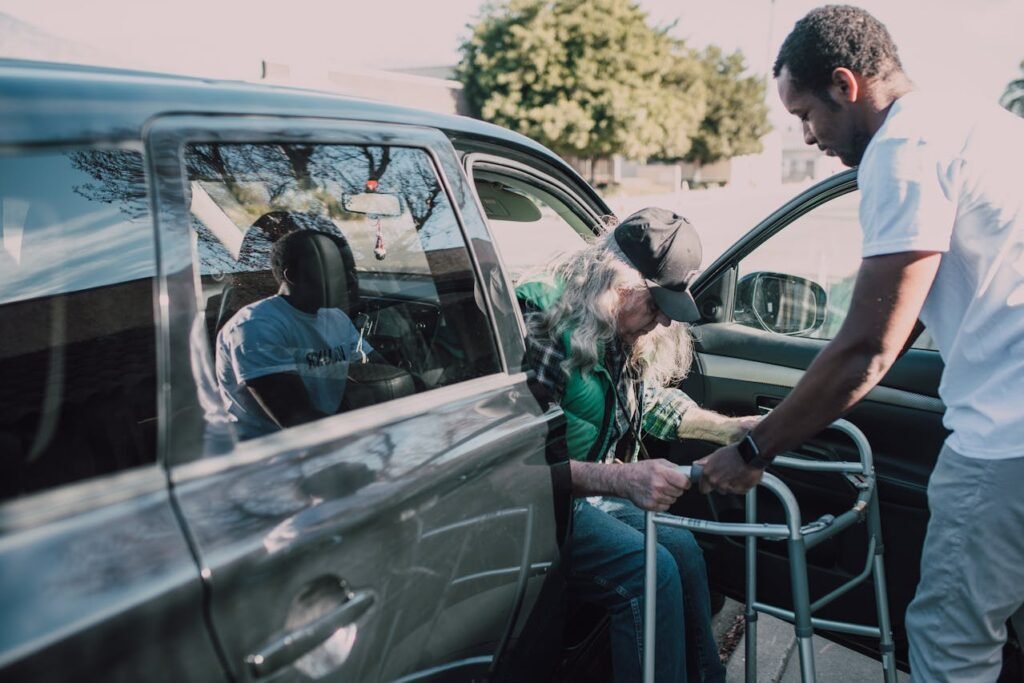
Evening is the time to let your body rest and recover. Before bed, remove your prosthesis carefully and give your residual limb a few minutes to breathe.
Sit down in a comfortable, stable chair. Unfasten your straps or liners slowly and slide your prosthesis off without twisting. Take your time—rushing can cause small skin pulls or irritation.
Once removed, inspect your limb under good light. Check for any red spots, pressure marks, or signs of swelling. These small checks help prevent bigger problems later.
Cleaning and Maintenance
Your prosthesis deserves care too. Wipe the inside of your socket and any liners with a soft, damp cloth. Avoid soaking or using harsh chemicals unless recommended by your prosthetist.
Let the parts dry completely before the next use. If you use silicone or gel liners, clean them gently with mild soap and warm water, then pat dry with a towel.
A clean prosthesis prevents odor, protects your skin, and ensures a longer lifespan for your device. It’s a small task with big rewards.
Caring for Your Residual Limb at Night
Once your prosthesis is off, your limb needs care. Wash it again with warm water and mild soap if you’ve sweated during the day. Pat it dry gently—never rub.
Apply a thin layer of moisturizer if advised by your doctor or prosthetist, allowing the skin to stay soft overnight.
If you notice swelling at the end of the day, elevate your leg slightly using a pillow. This encourages healthy blood flow and prevents tightness the next morning.
Evening Massage for Comfort
A light massage before bed helps reduce tension and improves circulation. Using your fingertips, gently massage the area around your residual limb in circular motions.
Avoid pressing too hard—just enough to feel relaxed warmth spreading through your muscles.
If you prefer, use a little bit of lotion to make the massage smoother. This small routine helps your skin and muscles recover overnight.
Reflecting on Your Day
Before sleeping, think about how your body felt throughout the day. Was your prosthesis comfortable? Did you feel balanced or tired?
This quiet reflection helps you learn what works and what doesn’t. It’s how you gradually shape a daily rhythm that feels natural and supportive.
Your body speaks through sensations. Listening to it each night ensures your next day begins with confidence and comfort.
Restful Sleep and Recovery
Finding a Comfortable Sleeping Position
The way you sleep affects how you feel in the morning. For most prosthetic users, lying on your back or side with gentle support is best.
If you lie on your back, place a pillow under your knees to reduce pressure on your lower back. If you sleep on your side, place a small pillow between your legs for alignment.
Avoid sleeping with your prosthesis on unless advised otherwise. Letting your skin and joints relax improves blood circulation and prevents morning stiffness.
Keeping Your Residual Limb Supported
Many seniors experience slight swelling overnight. Supporting your limb properly minimizes this.
You can wrap it lightly in a soft compression sock or elevate it on a pillow. The key is gentle, not tight, support.
This helps maintain limb shape and reduces pressure discomfort the next day. Always ensure the limb feels warm, not numb—circulation should remain free and easy.
Breathing for Better Sleep
Deep breathing before bed prepares both mind and body for rest. Lie back comfortably, close your eyes, and take slow breaths—inhale through your nose for four counts, exhale through your mouth for six.
This rhythm slows your heart rate and relaxes your muscles.
If your mind is active or you feel discomfort, focus on the flow of air in and out. Breathing deeply connects you back to calm and makes it easier to drift into peaceful sleep.
Managing Nighttime Discomfort
It’s natural to feel occasional tingling or phantom sensations at night. These can come from changes in nerve activity or pressure from earlier in the day.
When this happens, adjust your position gently or try light massage on the surrounding area. You can also place a warm towel (not hot) over the limb to soothe the nerves.
If discomfort becomes frequent, speak with your prosthetist—they can suggest liners or adjustments that make nighttime rest easier.
Creating a Calm Evening Environment
Your surroundings affect how well you sleep. Keep your room dim, quiet, and comfortably cool.
Try to disconnect from screens at least 30 minutes before bed. Instead, read a calming book, listen to soft music, or practice gratitude for the day’s achievements—no matter how small.
A calm mind helps your body rest and recover fully.
Long-Term Routine Consistency
Why Consistency Matters
Small habits done daily create the biggest changes. When you follow a simple, steady routine, your body adjusts naturally.
Your skin stays healthier, your muscles stay flexible, and your confidence in movement grows. Consistency also helps you notice patterns—what times of day you feel strongest, or when adjustments are needed.
This rhythm becomes your foundation, giving you a sense of control and peace.
Adapting the Routine to Your Needs
Every senior’s body and prosthesis are different. Some days you’ll feel full of energy, others slower—and that’s perfectly fine.
Adapt your routine based on your comfort. If you feel tired, shorten your stretches. If you feel light and strong, walk a little more.
Listening to your body keeps your routine sustainable and enjoyable instead of demanding.
Working with Professionals Regularly
Regular visits to your prosthetist and physiotherapist ensure your routine remains effective and safe.
They can help fine-tune your prosthesis fit, adjust alignment, or recommend updated care techniques as your needs change.
At RoboBionics, we always encourage seniors to stay connected with experts who understand their bodies and their daily challenges. Together, we create solutions that bring independence and ease.
Keeping Movement Light and Joyful
Movement doesn’t have to be exercise—it can be joyful. Dancing lightly to your favorite song, walking in your garden, or stretching under the morning sun all count.
The more you move with ease, the more your prosthesis feels like a part of you. Every small step keeps your muscles strong and your mind happy.
When movement feels enjoyable, consistency comes naturally.
Staying Positive Through Every Day
Some days will feel effortless; others may be a bit harder. That’s part of every journey.
What matters is showing up for yourself—doing what you can, when you can. Each small act of care adds up to something powerful: independence, confidence, and peace.
The real routine isn’t just about physical steps—it’s about patience, awareness, and gratitude for what your body can still do.
The RoboBionics Way to Everyday Comfort
Our Philosophy of Care
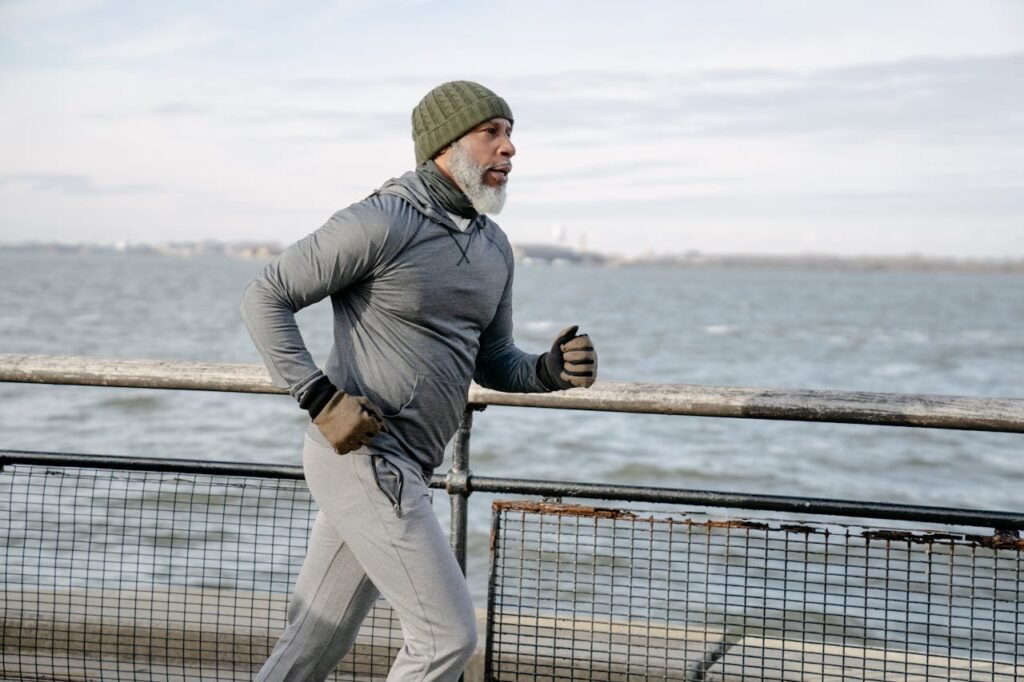
At RoboBionics, we believe technology should serve the human heart. Every prosthetic limb we design is made to move with your body’s rhythm—smoothly, naturally, and comfortably.
We understand that a prosthesis is not just a device—it’s part of your daily life. That’s why our focus goes beyond mechanics to how you feel each day: confident, supported, and free.
Our team works closely with seniors across India, helping them rediscover ease through thoughtful design, rehabilitation, and compassionate guidance.
Combining Innovation with Simplicity
Our flagship product, the Grippy™ prosthetic hand, and our advanced lower-limb prosthetics are built on the same principle—simple usability powered by smart engineering.
Each product is designed for real-world comfort, minimal maintenance, and natural motion. The goal is to make your routine lighter and more joyful from morning to night.
When your prosthesis supports you effortlessly, every movement feels natural again.
Building Confidence Through Guidance
We don’t just provide prosthetics; we offer lifelong support. Whether you need fit adjustments, care advice, or training tips, our experts are always here to help.
Our partnerships with clinics and rehabilitation centers across India make sure seniors receive personal guidance close to home.
Because confidence grows when care continues.
A Routine That Moves with You
A low-effort prosthetic routine isn’t about doing everything perfectly—it’s about creating a flow that feels natural.
From your first stretch in the morning to your last breath before sleep, every small action strengthens your connection with your prosthesis and your body.
At RoboBionics, we walk this journey with you, one gentle step at a time.
If you’d like to experience how the right prosthesis and personalized care can simplify your day, you can schedule a session at robobionics.in/bookdemo.
Your best days can still begin with ease and end in comfort—because living fully should never feel like hard work.



